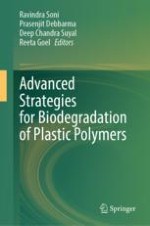2024 | OriginalPaper | Buchkapitel
3. Current Progress and Potential Microbial Cornucopia for Plastic Degradation
verfasst von : Shriniketan Puranik, Amanda Shylla, M. Manoj, D. Vijaysri
Erschienen in: Advanced Strategies for Biodegradation of Plastic Polymers
Verlag: Springer Nature Switzerland
Aktivieren Sie unsere intelligente Suche, um passende Fachinhalte oder Patente zu finden.
Wählen Sie Textabschnitte aus um mit Künstlicher Intelligenz passenden Patente zu finden. powered by
Markieren Sie Textabschnitte, um KI-gestützt weitere passende Inhalte zu finden. powered by
